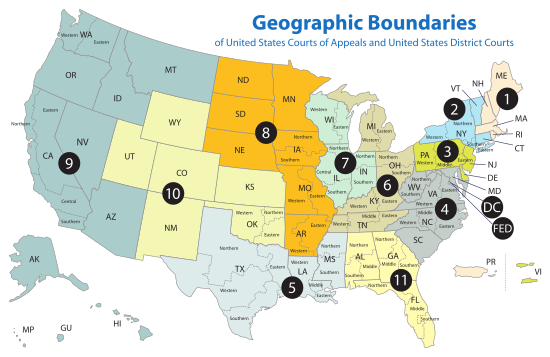Harold Burton nomination
When Supreme Court Associate Justice Owen J. Roberts retired in 1945, Truman decided to appoint a Republican as a bipartisan gesture. Truman had first met Harold Hitz Burton in 1941, when Burton was elected to the United States Senate, where Truman was then serving. Burton served with Truman on the Senate investigative committee that oversaw the U.S. war effort during World War II, and the two got along well.
On September 19, 1945, Truman nominated Burton, who was unanimously confirmed by the United States Senate on the same day by voice vote, without hearing or debate. [1]
Fred Vinson nomination
Chief Justice Harlan Fiske Stone died in office on April 2, 1946. Rumors that Truman would appoint Robert H. Jackson as Stone's successor led several newspapers to investigate and report on a controversy between Justice Jackson and Justice Hugo Black arising from Black's refusal to recuse himself in Jewell Ridge Coal Corp. v. Local 6167, United Mine Workers (1945). [2] [3] Black and Douglas allegedly leaked to newspapers that they would resign if Jackson were appointed Chief Justice. [3] On June 6, 1946, Truman nominated Fred M. Vinson, an old friend, as Stone's replacement. Vinson was confirmed by the United States Senate on June 20, 1946 by voice vote. [1]
Tom Clark nomination
The next vacancy occurred with the death of Justice Frank Murphy on July 19, 1949. On August 2, 1949, Truman nominated Attorney General Tom C. Clark. The New York Times called Clark "a personal and political friend [of Truman's] with no judicial experience and few demonstrated qualifications." [4] Clark had held various position in the Justice Department during the Roosevelt Administration, and had met and become good friends with Truman during that time; when Truman became president, one of his first acts was to appoint Clark as Attorney General. After playing an active role in the effort to reelect Truman in 1948, Clark made clear to the White House that he was planning to return to Texas and the practice of law. [5] Following Justice Murphy's sudden death, however, Truman nominated Clark to fill the vacancy, partly to bolster the majority of Chief Justice Fred Vinson, a former cabinet colleague and friend of Clark who, since his 1946 appointment by Truman, had failed to unify the Court. [6]
Numerous attacks from across the political spectrum were leveled at the nomination. [7] Allegations included charges of “cronyism” and a lack of judicial experience. Policy objections focused on Clark's work at the center of Truman’s anti-communist agenda and, specifically, the Attorney General’s List of Subversive Organizations. Former Roosevelt cabinet members Henry Wallace and Harold Ickes also leveled broadsides, for both personal and ideological reasons. [8] Ickes said about Clark's nomination to the Court, "President Truman has not 'elevated' Tom C. Clark to the Supreme Court, he has degraded the Court." [9] Nevertheless, Clark was confirmed by the United States Senate on August 18, 1949 by a vote of 73–8. [1] [10]
This page is based on this
Wikipedia article Text is available under the
CC BY-SA 4.0 license; additional terms may apply.
Images, videos and audio are available under their respective licenses.



